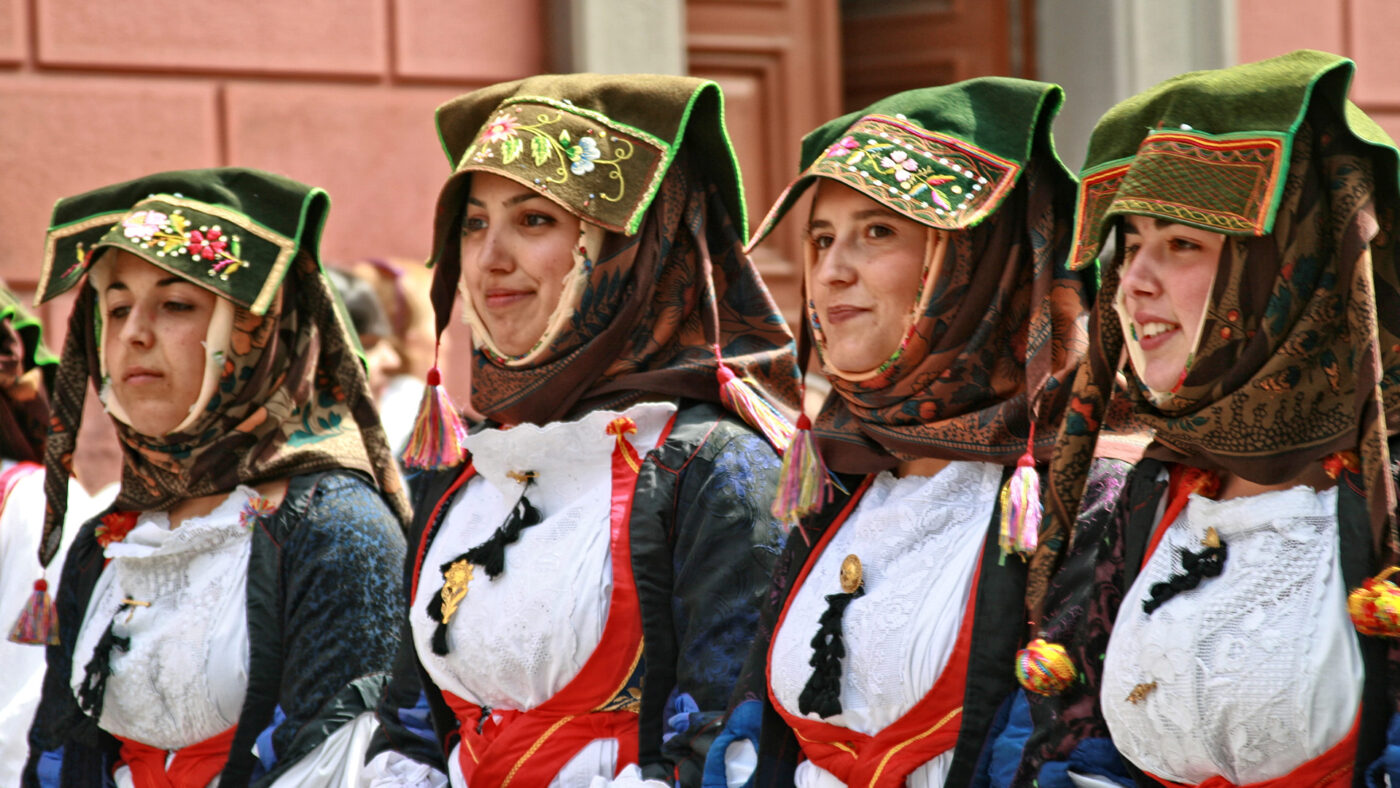Nuoro, considered the capital of Barbagia, stands on a plateau dominated by Mount Ortobene and surrounded by valleys and mountain. Its origin dates back to the Roman period, when the populations scattered around the nuraghi took refuge in less accessible places, encouraging that myth of inviolability and isolation of the Barbaricina area. Thanks to its geographical centrality, Nuoro gradually acquired territorial superiority over the surrounding villages until it became the provincial capital in 1926.
Walk through the old narrow streets of the historical shepherds district of Santu Predu. Here you will find a beautiful gem the tiny square embellished by Costantino Nivola and dedicated to the poet Sebastiano Satta, who animated the city culture together with the Nobel prize winning Grazia Deledda, in whose birthplace is set up the Deleddiano museum, which still preserves intact documents and objects that belonged to the writer. An obligatory stop is the Ethnographic Museum or Museo del Costume, whose exhibition rooms hosts traditional clothing, the carnival masks of Barbagia, jewelery, rugs, tapestries, bread and sweets. For those who love art it is recommended the MAN, the Nuoro province Museum of Art, with its permanent collection of the best Sardinian artists of the 19th and 20th centuries and important international temporary exhibitions.
In the western part of the city stands Mount Ortobene, a real natural monument, whose forests are often a destination for excursions to reach various panoramic viewpoints. In the mount there is the statue of Christ the Redeemer, to which the Festa del Redentore (Festival of the Redeemer) is dedicated, in the last week of August, characterized by the peculiar parade of traditional island costumes and the procession of the faithful who reach the top of the hill from the city. The so-called “sa conca” is a significant tourist interest in the mountain and it is an evocative rural residence built inside a huge granite boulder.

At the foot of the mountain there is an interesting archaeological area made up of various domus de janas and necropolises dating back to the Neolithic and Eneolithic periods. At the top there is the ancient country church of Nostra Signora ‘e su Monte and on the slopes the Valverde sanctuary and the ruins of the churches of Sa Itria and Santu Jacu.
About events, in addition to the already mentioned Redeemer festival, the Mastros in Nugoro event, a stage of the wider Autumn in Barbagia event, is of great importance. During this event, typical and artisan products are exhibited and it is staged Su Cojubiu Nugoresu, an ancient rite about a wedding celebrated in traditional costume.
Then there are some other festivals such as the Madonna delle Grazie festival, celebrated on November 21 and the festival of Sant’Antonio, on January 16 and 17, during which the districts organize large bonfires in the squares and offer to citizens fava beans and lardu, wine and carasau bread.About gastronomy, the Barbaricina culture offers different variations of the typical Sardinian cuisine products that are very tasty. Among the specificities of the place, Su filindeu is a must, a pasta used for soups, made of thin overlapping threads with great skill, traditionally by local women. This pasta is considered one of the rarest in the world. Another very important dish of the Nuoro gastronomic tradition is S’aranzada nugoresa, a delicious dessert prepared with orange peel candied with honey and almonds.